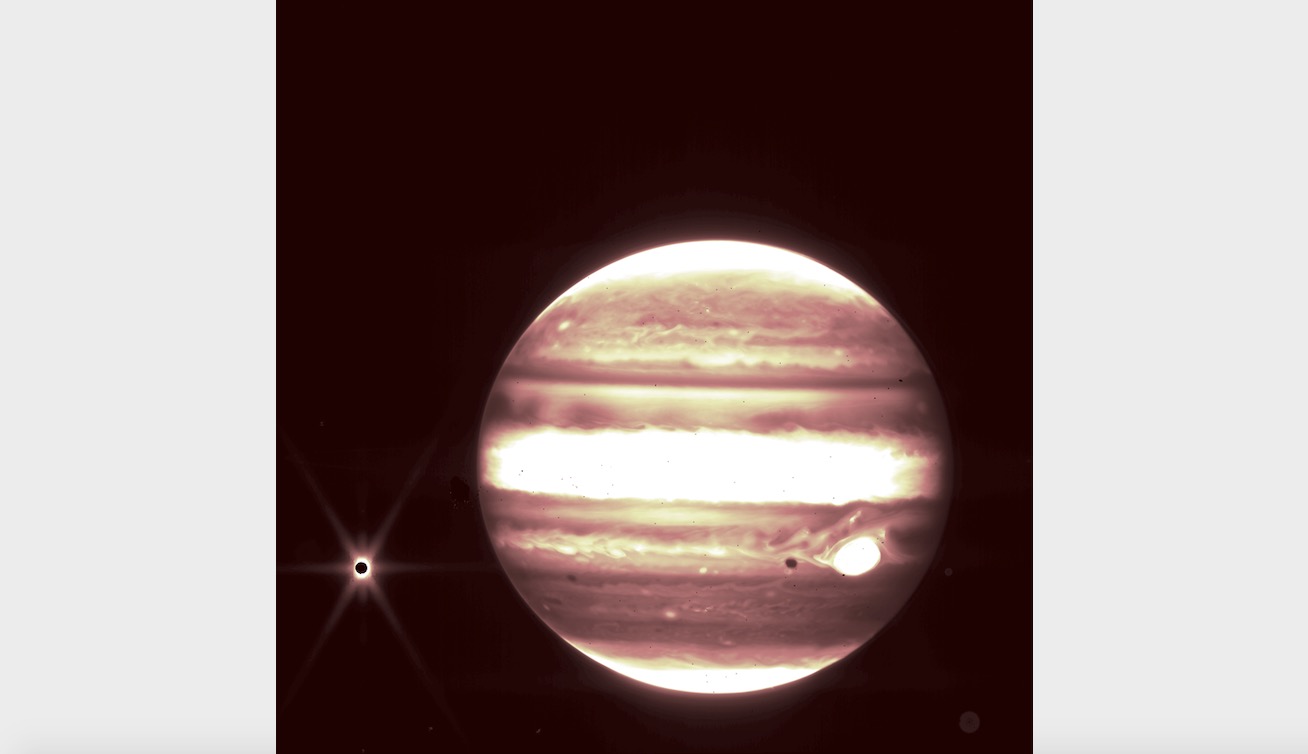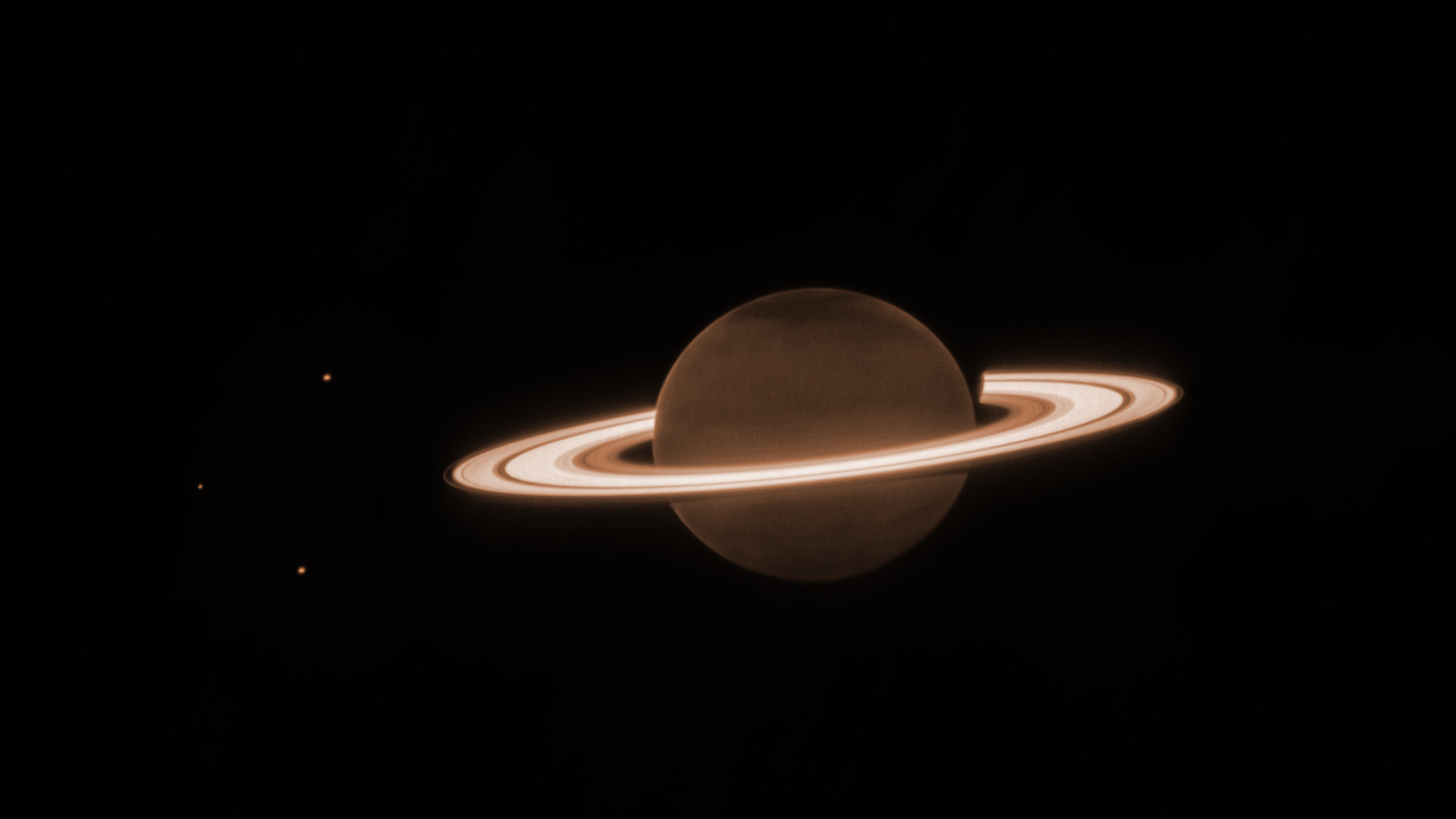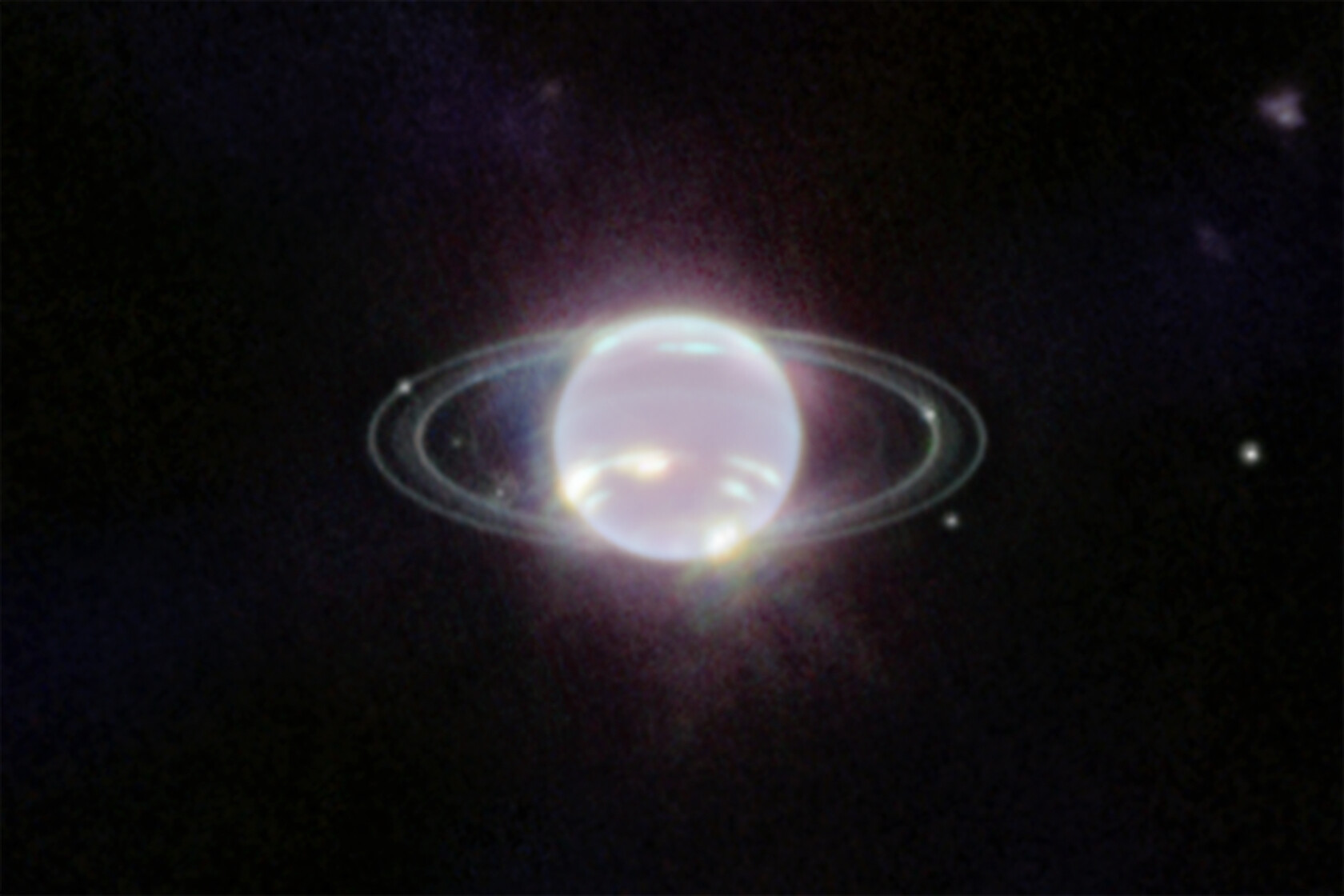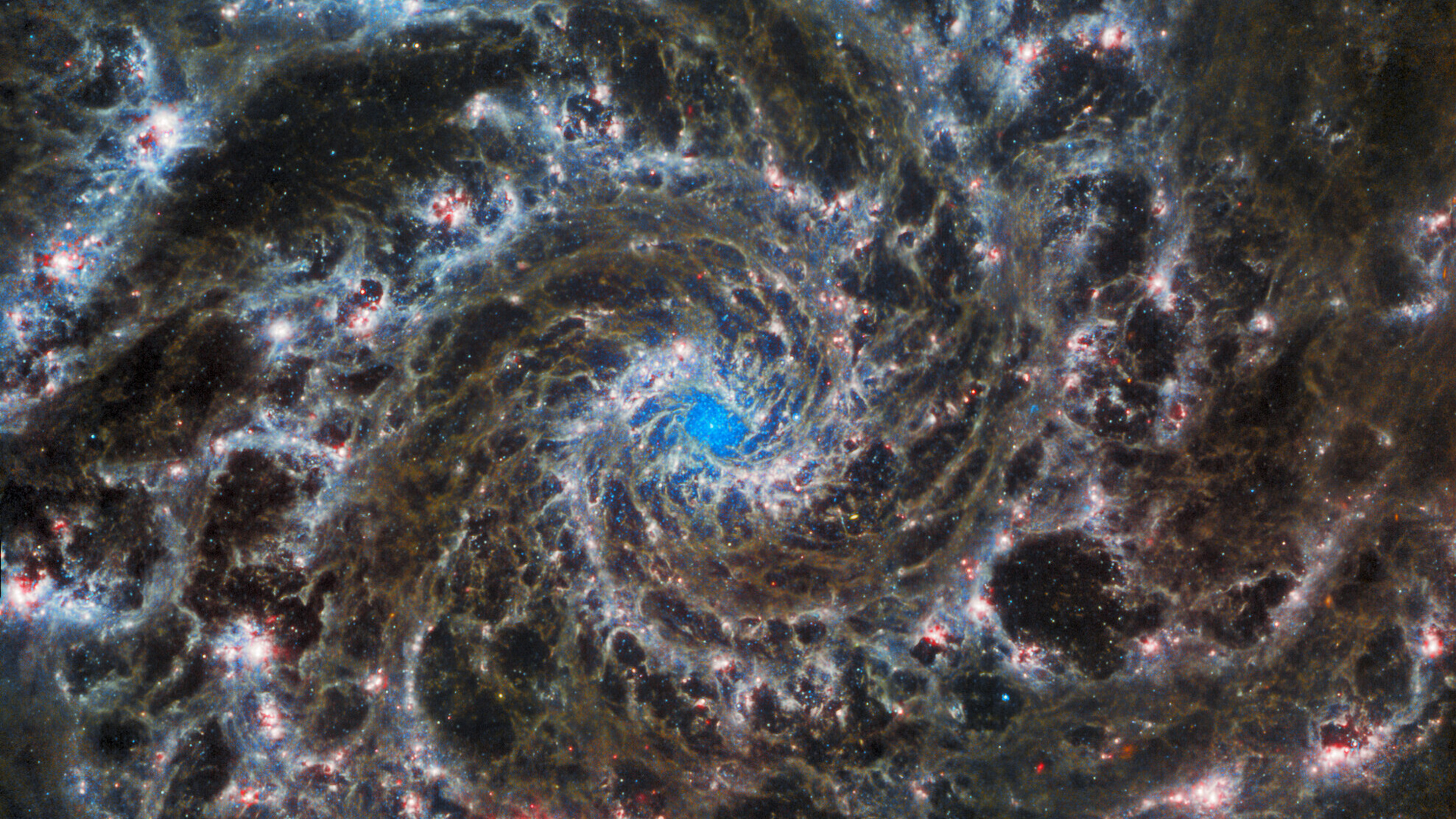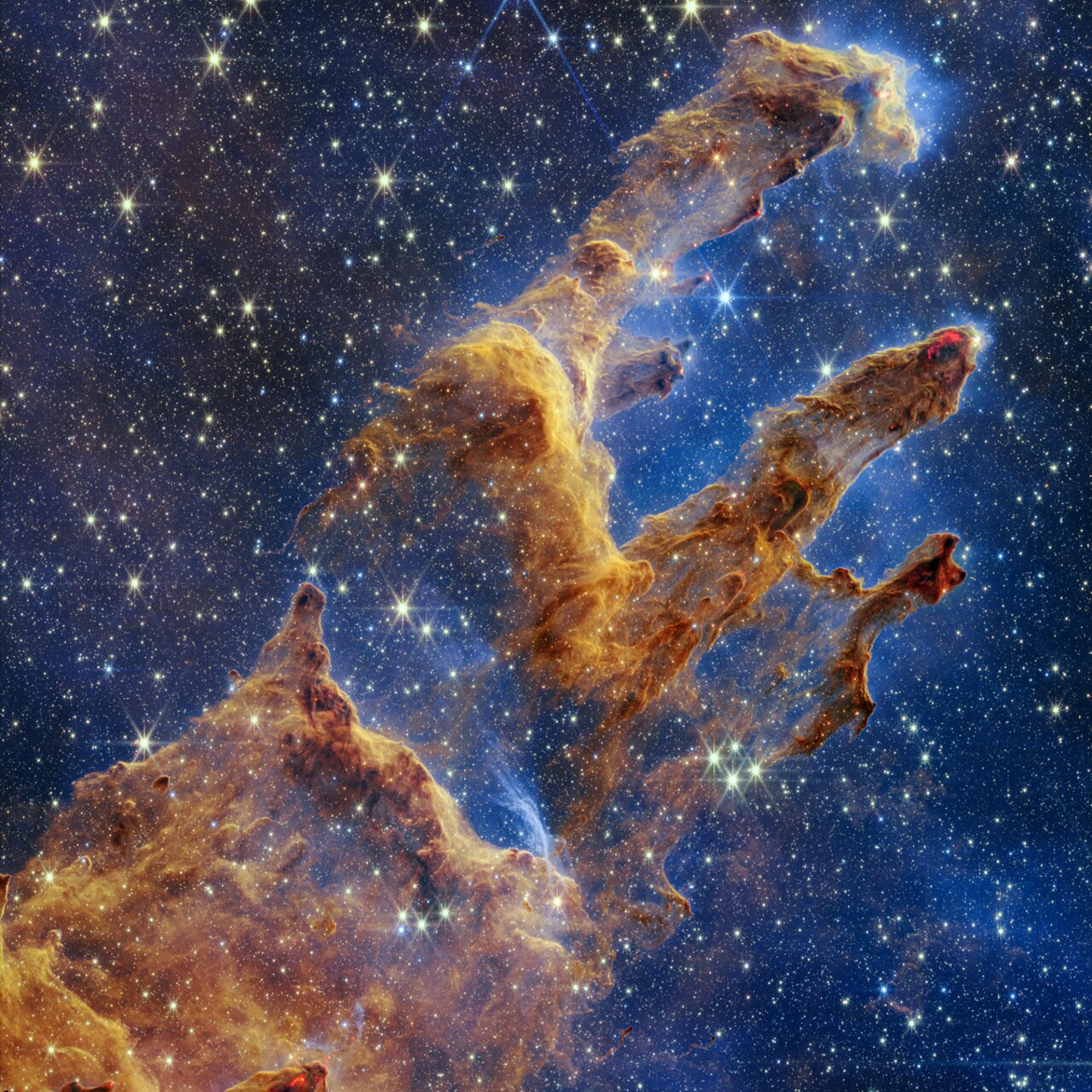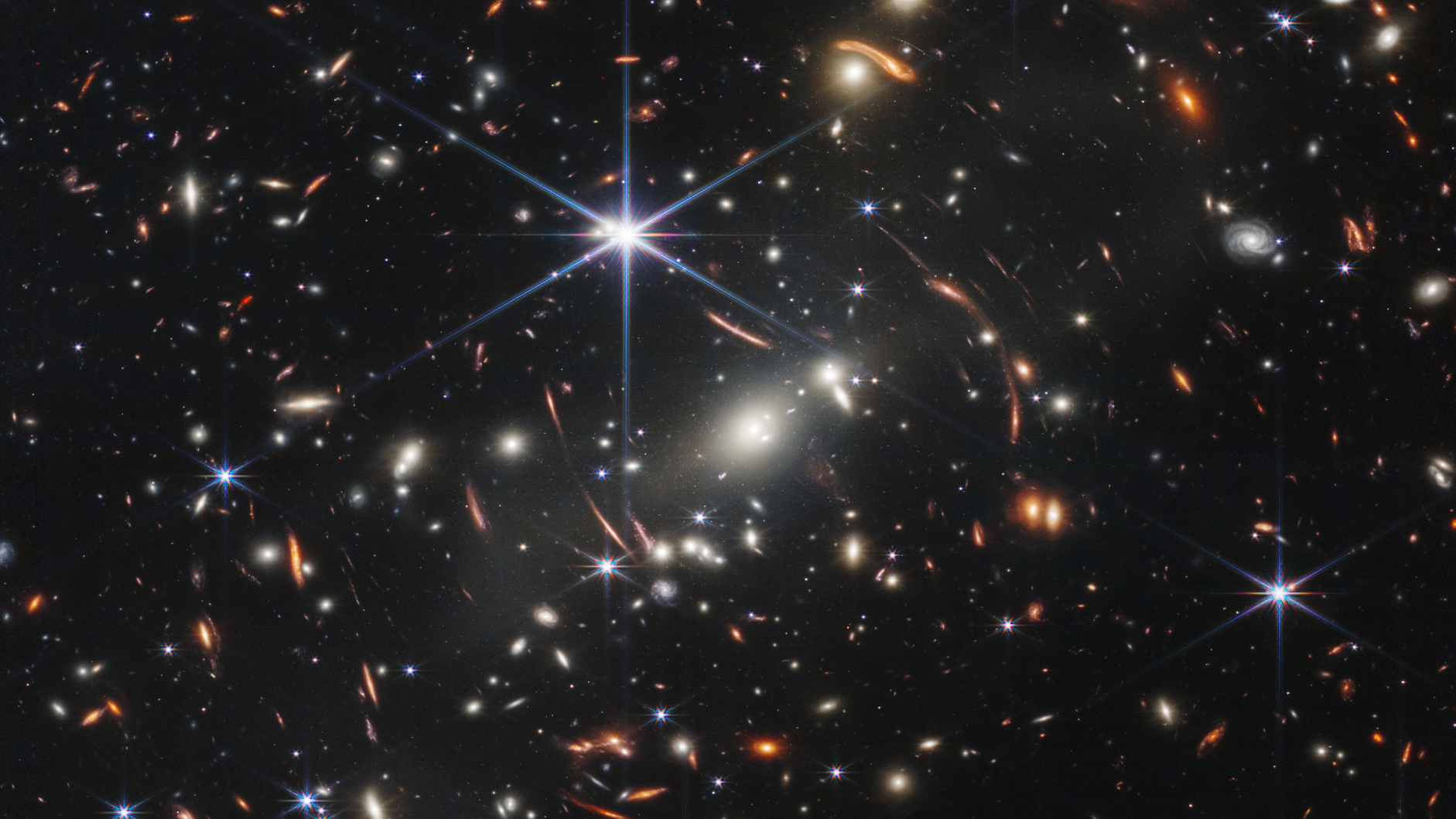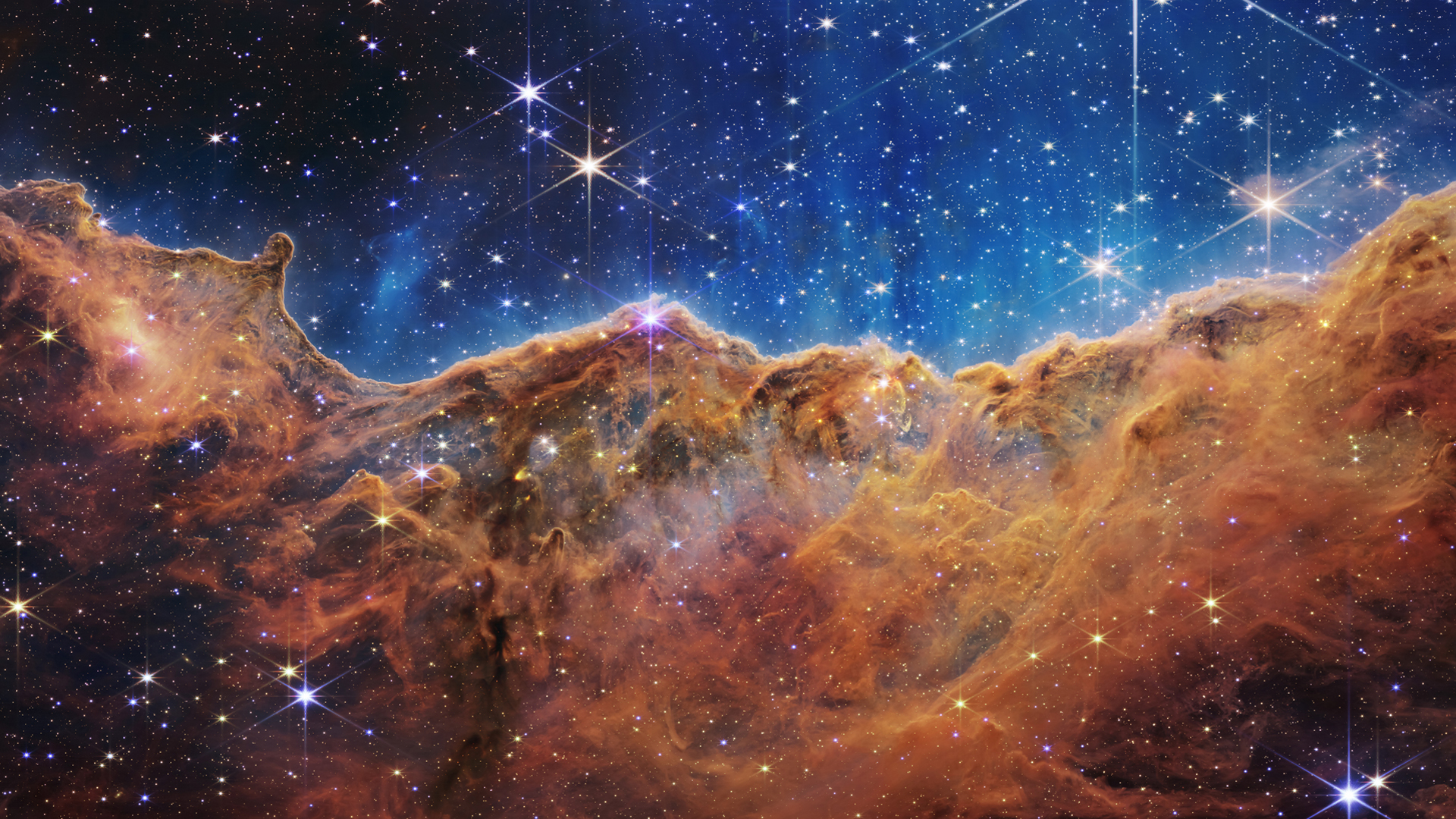See amazing images from James Webb Space Telescope's 1st year gazing deep into the cosmos (photos)
Humanity's most powerful eye in the sky has spent a year at work and captured some remarkable images.
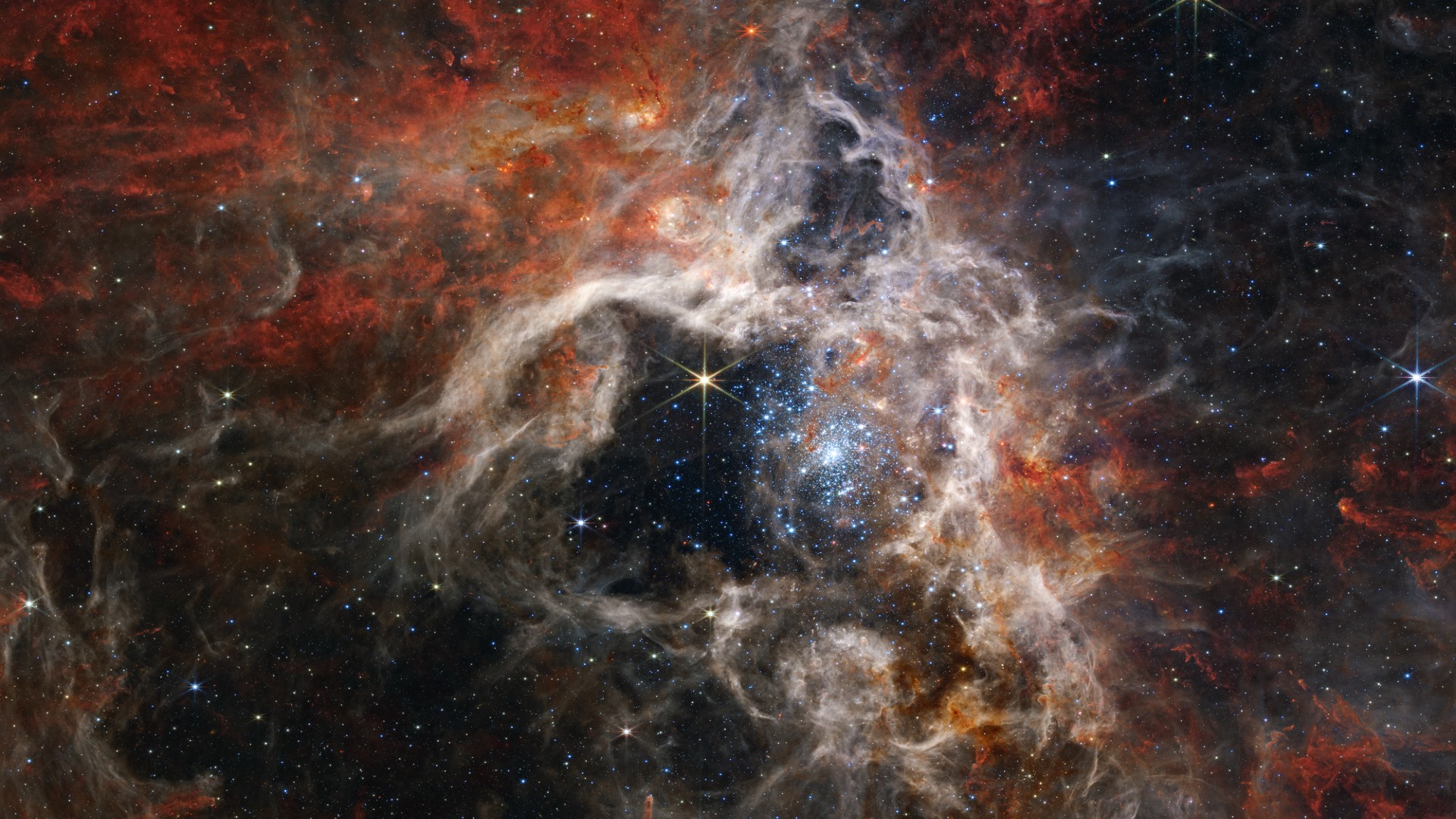
The universe has never looked this gorgeous.
The first images from NASA's James Webb Space Telescope (JWST) were released July 12, 2022. In the year since then, the deep-space imaging probe has captured some of the most remarkable stellar photography humanity has every laid eyes on.
As the James Webb Space Telescope celebrates one year of science, we've collected some of the most breathtaking images of the universe produced by the revolutionary instrument.
Related: The James Webb Space Telescope wraps 1st year peering across the universe. What has it discovered so far?
Read more: James Webb Space Telescope celebrates 1st year of science with jaw-dropping view of cosmic nursery (photo)
JWST's 'selfie'
At a cursory glance, JWST's selfie is nothing special - just a black and white image of the telescope's mirrors. But this photo is was a big deal when it was taken, helping to ensure scientists that the telescope was ready for science.
JWST's near-infrared camera (NIRCam) contains a special lens which allows mission operators to inspect and align sections of the telescope's primary mirror.
Instruments aboard the spacecraft are so sensitive that the heat and electricity from any type of onboard observational cameras would have created interference. So, aside from the image of a folded-up JWST floating away from its launch vehicle's payload bay, these black and white mirror selfies are our only images of the telescope in space.
Breaking space news, the latest updates on rocket launches, skywatching events and more!
JWST gazes at Jupiter and Europa
This is another one of Webb's early images. Infrared yellow-brown hued bands of storms layering Jupiter's atmosphere are seen alongside the planet's famous Great Red Spot shining in white, alongside Europa, one of the gas giant's several moons. It's not the most vibrant photo of Jupiter we have seen, but it's another picture with some significance: The image was captured during JWST's commissioning period, while the telescope's systems were being calibrated.
As for Europa, the little moon to Jupiter's left in the image is getting a probe of its very own. NASA's Europa Clipper is expected to launch next year aboard a SpaceX Falcon Heavy rocket. The moon is believed to harbor vast underground oceans, and could contain potential conditions suitable for the development of life.
JWST reveals Saturn's rings
Saturn is pictured here with several of the planet's numerous moons. It was created over the span of a 20-hour imaging campaign, and captured three of the planet's moons: Enceladus, Thethys and Dione.
At last count, the ringed-planet has 145 moons. Like the Jupiter photo, this image of Saturn was created during JWST's calibration campaign in June of 2022, which managed to capture the stunning bright light reflected off Saturn's rings.
Enceladus is another of the outer planets' active moons catching the eyes of scientists. The James Webb Space Telescope revealed geysers spewing from Enceladus's surface, which can shoot up into space, higher than the diameter of the moon itself.
Webb uncovers the colorful Tarantula Nebula
This image was captured by JWST in September 2022, and features the Tarantula Nebula, a stellar nursery located about 161,000 light-years from Earth.
The mind-boggling image of the nebula shows an area measuring 340 light-years across. The gaseous span shows the birthplace of thousands of star systems, with galaxies lighting up the background.
JWST eyes Neptune's rings
JWST's NIRCam captured this picture of Neptune in July 2022, and is the first clear image of the icy planet's rings since the Voyager 2 probe snapped a pic in 1989.
Thanks to Webb's considerable technology boost compared to the interplanetary Voyager probe, scientists were able to image fainter, dusty rings around the planet for the first time. Instead of the planet's usual blue atmosphere, the telescope's near-infrared wavelength lights up Neptune's high altitude clouds.
JWST gazes into mesmerizing Phantom Galaxy
JWST saw the Phantom Galaxy in a new, eerie light. Messier 74, or M74, a spiral galaxy with nearly symmetrical swirling arms, is not a newly discovered celestial object, nor was its imaging by JWST a novel event.
However, the telescope's enhanced capabilities compared to its predecessors lends its images levels of detail unprecedented in other space telescopes.
JWST looks upon the Pillars of Creation
The unimaginably high stretch of the Eagle Nebula's Pillars of Creation were captured by JWST in the greatest detail ever.
Webb's ability to peer through the clouds to see stars shrouded from view has reshaped models for stellar nursery activity, and revealed thousands of stars of different ages within the pillars' columns. Of the Eagle Nebula's span, which can reach as far as 70 light-years across, the Pillars of Creation account for about 5 light-years, making just that part of the nebula larger than the distance between our sun and the nearest other star, Proxima Centauri.
The JWST Deep Field
This was JWST's first "real" image, the first publicly revealed picture used to demonstrate the telescopes tangible capabilities. Lest you mistake this picture for a smattering of random twinkles, this picture should, in fact, blow your mind. Those twinkling dots aren't stars. They're galaxies. Each tiny point of light across the blackness of space in the photo is an entire galaxy of hundreds of thousands of stars, captured from just a pinhole selection of the night sky.
The curvature that bends the light in some of the galaxies shown is precisely what JWST was built to study. This bending phenomenon is known as gravitational lensing, which occurs when the mass of colossal objects warps the light of objects behind them. This effect can help JWST peer closer into the very beginning of the universe itself.
Webb sees Uranus like never before
Uranus does not get enough love. It's literally the coolest.
The lopsided ice giant has the most erratic orbit of any planet in the solar system, and a ring system that might rival of Saturn's if it were close enough for better viewing.
This image from JWST captures the stunningly blue Uranus, hung sharply in the center of its glowing rings, with 27 moons shining in shades of blue and orange in their orbits around the icy world.
Webb amazes with the Carina Nebula
This was another of JWST's first released images and arguably its most well-known.
The Carina Nebula is 7,600 light-years from Earth, and spans over 300 light-years. This spectacularly colorful image shows the birthplace and death knells of thousands and thousands of stars. The dusty storms of these Cosmic Cliffs produce entire solar systems across the millennia.
Like other nebula under Webb's watchful eye, the telescope's infrared capabilities revealed hundreds of stars previously hidden behind the clouds, including some protostars emitting jets!

Josh Dinner is the Staff Writer for Spaceflight at Space.com. He is a writer and photographer with a passion for science and space exploration, and has been working the space beat since 2016. Josh has covered the evolution of NASA's commercial spaceflight partnerships and crewed missions from the Space Coast, as well as NASA science missions and more. He also enjoys building 1:144-scale model rockets and human-flown spacecraft. Find some of Josh's launch photography on Instagram and his website, and follow him on X, where he mostly posts in haiku.

